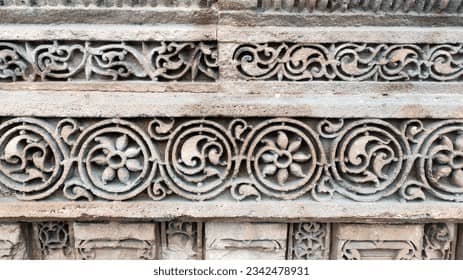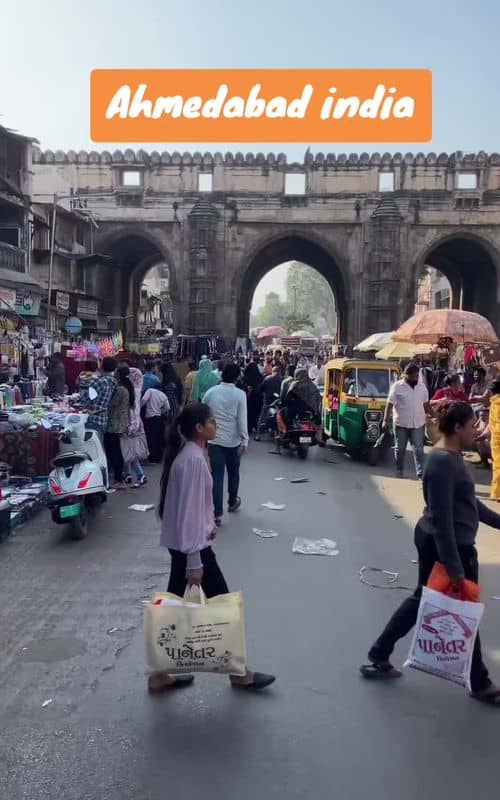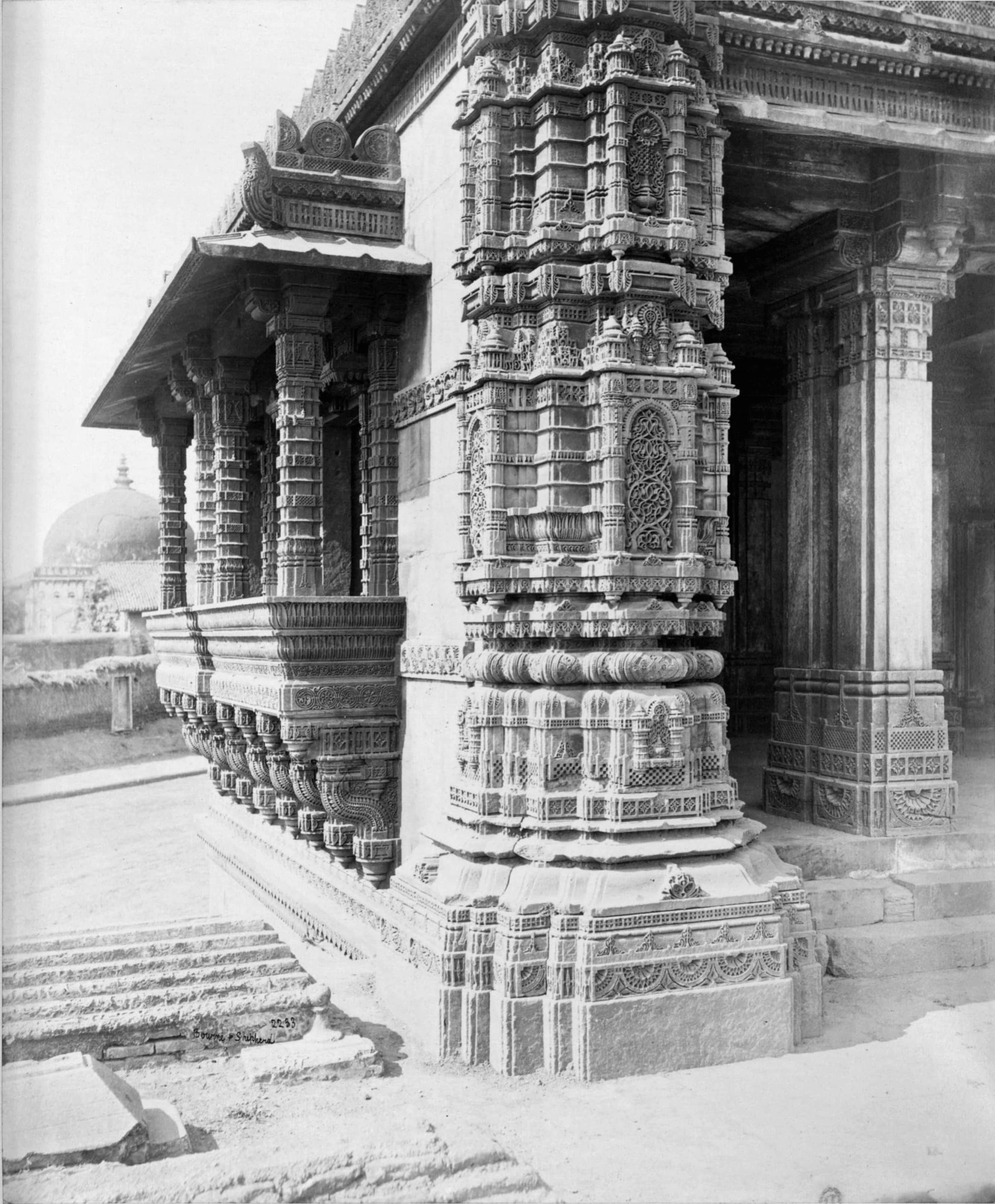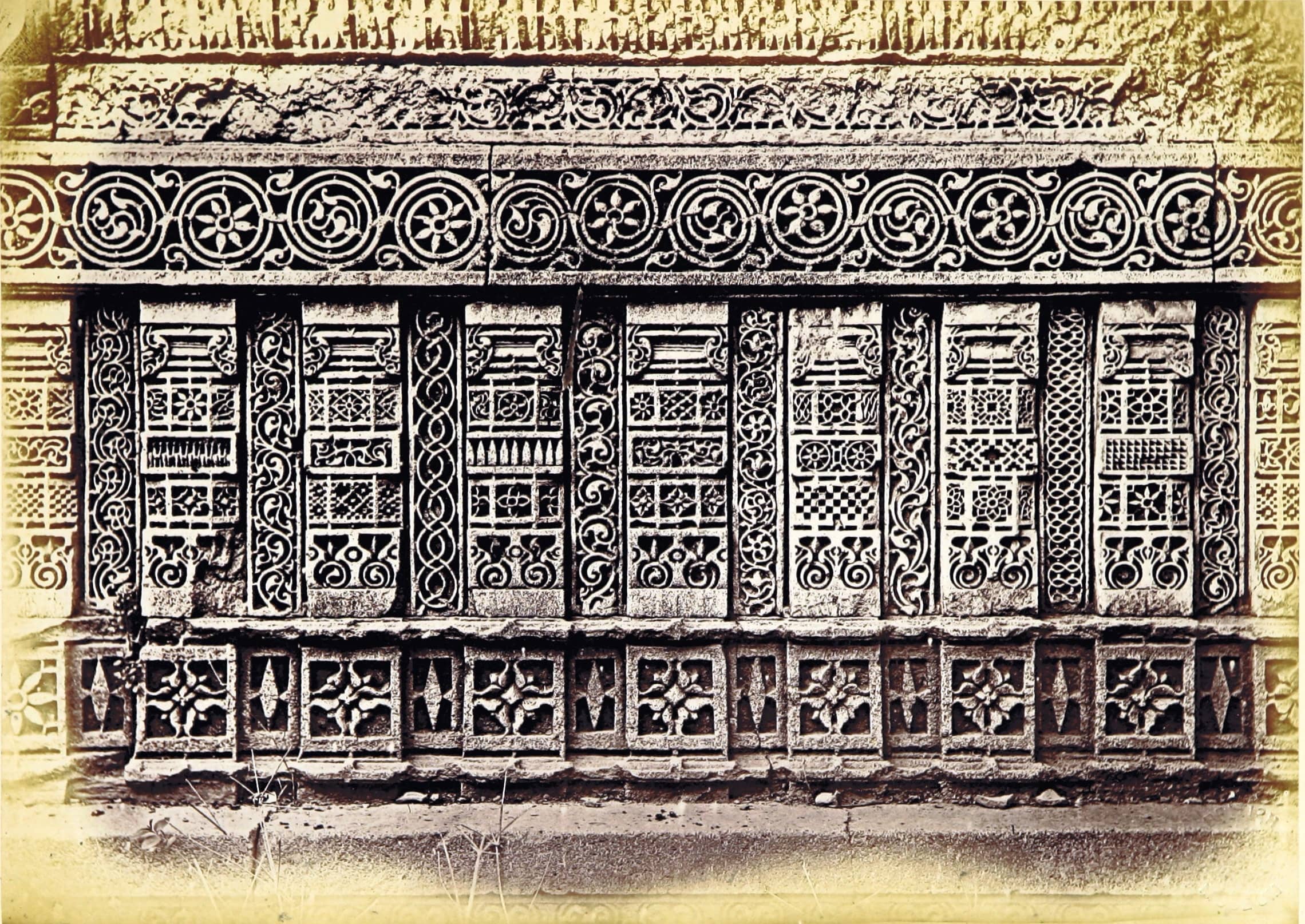Rani Sipri Mosque Ahmedabad
A 16th-century architectural gem in Ahmedabad, blending Islamic, Hindu, and Jain styles with exquisite stone carvings.

Highlights
Must-see attractions

Social
From TikTok & Reddit
Best Time
Best light for photos
Rani Sipri Mosque Ahmedabad
Best Time
Best light for photos

Highlights
Must-see attractions
A 16th-century architectural gem in Ahmedabad, blending Islamic, Hindu, and Jain styles with exquisite stone carvings.
"A hidden gem of Ahmedabad with stunning Indo-Islamic architecture and beautifully carved pillars."
📸 Capture the Details
Spend an hour exploring and photographing the incredible detailing on walls and jalis.
🤫 Seek Serenity
Despite being on a busy road, the mosque's interior is remarkably quiet and peaceful.
Highlights
Discover the most iconic attractions and experiences

Intricate Stone Carvings
Marvel at the delicate jali work and detailed carvings on the walls and pillars, showcasing exquisite craftsmanship.

Slender Minarets
Admire the graceful, tall, and beautifully carved minarets that add to the mosque's elegant silhouette.

Queen Sipri's Tomb
Explore the serene tomb of Queen Sipri, a personal and meaningful part of the mosque complex.

Architectural Fusion
Witness the unique blend of Islamic, Hindu, and Jain architectural styles in its design and construction.
Plans like a pro.
Thinks like you
Planning Your Visit
Timing is Key for Tranquility
Appreciating the Artistry
Best Times
Insider Tips
from TikTok, Instagram & Reddit
📸 Capture the Details
Spend an hour exploring and photographing the incredible detailing on walls and jalis.
🤫 Seek Serenity
Despite being on a busy road, the mosque's interior is remarkably quiet and peaceful.
🚶♀️ Explore the Pol
The mosque shares a wall with Dhal ni Pol, a historic settlement worth exploring.
💎 Jewel of Ahmedabad
Appreciate why it's called Masjid-e-Nagina, the 'Jewel of a Mosque,' for its delicate beauty.
Tips
from all over the internet
📸 Capture the Details
Spend an hour exploring and photographing the incredible detailing on walls and jalis.
🤫 Seek Serenity
Despite being on a busy road, the mosque's interior is remarkably quiet and peaceful.
🚶♀️ Explore the Pol
The mosque shares a wall with Dhal ni Pol, a historic settlement worth exploring.
💎 Jewel of Ahmedabad
Appreciate why it's called Masjid-e-Nagina, the 'Jewel of a Mosque,' for its delicate beauty.
What Travellers Say
Reviews Summary
Rani Sipri Mosque is lauded as a hidden gem and a beautiful example of Indo-Islamic architecture, praised for its intricate carvings and serene atmosphere. Visitors appreciate its unique blend of styles and the peacefulness despite its central location. However, some note that the surrounding areas could benefit from better maintenance.
"A Queen's Legacy
Rani Sipri Ki Masjid, also known as Rani Sipri's Mosque or Masjid-e-Nagina (Jewel of a Mosque), is a stunning monument in Ahmedabad. It was built in 1514 by Rani Sipri, the wife of Sultan Mahmud Begada. The mosque is celebrated for its delicate architecture and fine craftsmanship, earning its title as a jewel of Ahmedabad.
The mosque's architecture is a testament to its royal patronage and is often described as a reflection of "feminine grace." Its intricate carvings and details are a departure from the more robust styles of other contemporary structures. The two slender and beautifully carved minarets rise gracefully, complementing the overall delicate design.
The monument's interior is a marvel of artistic expression. It features a majestic prayer hall with multiple arches that open into the courtyard. The balconied windows are adorned with delicate screens and carvings, and the mihrab is a masterpiece of floral and geometric patterns. The attention to detail extends to every surface, from the columns to the ceiling.
The mosque complex includes a serene courtyard and a large ablution tank, which adds to its peaceful ambiance. The tank, or hauz, is a beautiful feature of the complex, designed for ritual purification before prayers. Rani Sipri's tomb is also located here, making the mosque a deeply personal and meaningful testament to her piety and artistic patronage."
Rizwan Uddin
"This small but beautiful mosque is situated in Astodia Darwaja area in Ahmedabad.Mosque & Maqbara are there.Both monuments are ultimate examples of stone carving.Muslim,Hindu & Jain types of architectures shown here in its design & construction.
This mosque is built in 1514 AD by Rani Sipri ( also known as Rani Sabrai,Rani Shubha Rai & Rani Asni)Rani Sipri was a Hindu Wife of Ruler Mohammed Begada.
This mosque is so beautiful that Mr.Fergusion named it " Jewel Of Mosue" means "Masjid-e-Nagina""
Shasheekant Vaghela
"Beautiful mosque that’s right next to the street. Amazing carvings and this mosque is less visited. Built in 1514 AD by Rani Sabrai, widow of Sultanmahmud Shah I Begada."
Nas Sol
What People Like
What People Dislike
Frequently Asked Questions
🚇 🗺️ Getting There
Rani Sipri Mosque is located near Astodia Darwaja in the walled city of Ahmedabad. You can reach it by auto-rickshaw or taxi. Some city tours also include this heritage site.
While it's in the city center, public transport might require some walking from the nearest stops. Auto-rickshaws and ride-sharing services are generally more convenient for direct access.
Navigating the walled city can be an adventure! Consider using a local guide or a reliable GPS app. The mosque is situated along a busy road.
Parking can be challenging in the dense walled city. It's advisable to check with local authorities or your transport provider for the nearest available parking spots.
Yes, it's located in the historic walled city, making it easy to combine with visits to other pols (traditional neighborhoods) and heritage sites like the Tirupati Balaji Temple, which shares a wall.
🎫 🎫 Tickets & Entry
There is typically no entry fee to visit Rani Sipri Mosque, as it is a historical monument open to the public.
The mosque is generally open during daylight hours. It's best to visit during the day to appreciate the architecture and carvings.
No, advance booking is not required as there is no admission fee. You can visit anytime during its open hours.
As it is a place of worship, modest attire is recommended. Covering shoulders and knees is advisable out of respect.
Photography is generally allowed, but it's always good to be respectful of worshippers and the sanctity of the place.
📸 📸 Photography
The intricately carved pillars, delicate jali work, slender minarets, and the courtyard offer excellent photographic opportunities.
Early morning or late afternoon provides the best natural light for capturing the details and ambiance of the mosque.
While generally permitted, avoid intrusive photography, especially during prayer times. Be mindful of the historical and religious significance of the site.
Tripod usage might be restricted in certain areas or during peak times. It's advisable to check on-site or with local authorities if you plan to use one.
The unique blend of architectural styles and the fine stone carving details offer a distinctive photographic subject, showcasing a different facet of Ahmedabad's heritage.
🎫 🏛️ Onsite Experience
Built in 1514 by Queen Sipri, the Hindu wife of Sultan Mahmud Begada, it's a testament to her piety and patronage, showcasing a unique blend of architectural styles.
The mosque exhibits a beautiful fusion of Indo-Islamic architecture, with influences from Hindu and Jain styles, evident in its carvings and design.
A visit usually takes about an hour to fully appreciate the architecture and serene ambiance.
It is considered a less crowded monument compared to other major attractions in Ahmedabad, offering a more peaceful experience.
The nickname 'Masjid-e-Nagina' translates to 'Jewel of a Mosque,' reflecting its exquisite beauty and delicate craftsmanship.
For Different Travelers
Tailored advice for your travel style
👨👩👧 Families with Kids
Consider visiting during cooler parts of the day to ensure comfort. The mosque is located near Dhal ni Pol, which might offer a glimpse into traditional Ahmedabad life. Keep the visit concise, focusing on the most visually interesting aspects like the minarets and carvings, to maintain children's engagement.
📸 Photography Enthusiasts
Aim for early morning or late afternoon for the best natural light, which accentuates the textures and details of the stone carvings. The mosque's relatively low visitor count means you'll likely have more freedom to capture your shots without constant interruptions. Be mindful of respectful photography practices.
🏛️ History & Architecture Buffs
Take your time to study the craftsmanship, the symbolism in the carvings, and the historical context of its construction by Queen Sipri. The mosque's 'feminine grace' and its nickname 'Jewel of a Mosque' are points of interest for those keen on understanding the nuances of medieval Indian architecture.
Deep Dives
In-depth insights and expert knowledge
Architectural Marvel: A Blend of Cultures
The mosque's most striking features include its two slender, intricately carved minarets that rise elegantly, complementing the building's delicate silhouette. The interior boasts a majestic prayer hall with multiple arches, leading to a serene courtyard. The balconied windows are adorned with exquisite jali (stone lattice) work, and the mihrab is a masterpiece of floral and geometric patterns. The attention to detail is remarkable, extending from the columns to the ceiling, making it a true 'Jewel of a Mosque' (Masjid-e-Nagina).
Despite its historical significance and artistic merit, the mosque's surroundings have faced some neglect, with badly painted signs and unmaintained areas detracting slightly from its charm. However, the mosque itself has largely retained its character, offering visitors a peaceful glimpse into Ahmedabad's rich architectural heritage.
The Legacy of Queen Sipri
The complex includes Rani Sipri's tomb, adding a layer of personal significance to the site. This tomb, along with the mosque, serves as a lasting memorial to her. The mosque's serene courtyard and the large ablution tank (hauz) further enhance the peaceful ambiance, making it a place of reflection and devotion.
This historical monument stands as a symbol of cultural harmony and the artistic contributions of women in medieval Gujarat. Its less-visited status allows for a more intimate experience, where visitors can connect with the history and the legacy of Queen Sipri.
Social
from TikTok, Instagram & Reddit